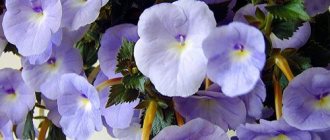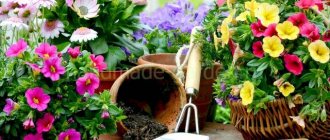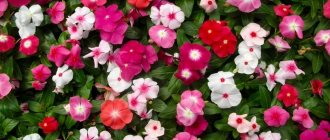The green wall in the interior is a relatively new interior object. It is used to smooth out the situation and dominate a large number of horizontal surfaces. You can organize such vertical decor in any room. The main thing is that the conditions for growth are suitable and that watering is regular.
Decorating a wall with a green garden in a living room in a private house Source dekormyhome.ru
What is a green wall
Landscaping is a partition or simply a vertical object. It is made from living plants of climbing and bush varieties. The composition is formed using holding structures. The frame of these is built strong and stable, since the finished decor will have considerable weight.
Hall with a corner living wall made of hanging plant stems Source ecosoil.ru
Vertical gardening in a house or apartment has several functions:
- suppresses noise (plant leaves are able to retain sound waves, preventing them from passing into other rooms;
- equips the room with oxygen (plants clean the air of carbon dioxide and release oxygen in return);
- it looks beautiful and accepts dust (its small particles are attached to the leaves, leaving the furniture almost clean);
- saves space in the room (plants are planted in one location, so your window sills and floors will remain free);
- in hot weather, it cools the room and increases its humidity (this occurs due to evaporation);
- has a zoning effect (with the help of a vertical garden you can divide one spacious room into two. Relevant for a studio apartment or kitchen-living room);
- allows you to hide defects in walls and ceilings, visually aligns the room.
In order for the wall to always be beautiful and lush, it must be properly maintained. Therefore, when selecting plants, be sure to consider what conditions they need. It is advisable to select varieties that are less capricious or require the same care.
What is needed to arrange a phytowall?
Structures with living plants need light , and the lighting must be correct, otherwise the plants may get sick and even die. The body of the structure, of course, can have a built-in lighting system, but most often such lighting is not enough. Therefore, it is better to use ceiling lighting, which should be calculated by a specialist.
Vertical gardens require an electrical . And for large phytowalls, a connection to water supply and sewerage .
Automatic watering is required for phytowalls and phytomodules with a hydroponic planting method, and systems on the ground can be used without it.
Plants in phytowalls can be planted in two ways: “ on the ground ” and the hydroponic method , while only the hydroponic method is typical for phytomodules. You can read more about them on the websites of companies involved in vertical gardening.
Naturally, any design has its own dimensions . So, for example, a phytopartition can have a width of about 40 cm (depending on the height), a phytopicture about 15 cm, and a phytowall about 20 cm. In each case, these dimensions are individual, and they must be taken into account.
Selection of plants for vertical decoration and method of cultivation
When choosing vegetation for your home garden, you first need to decide on the planting method. Indeed, for many indoor crops this factor plays an important role. Can be planted using regular flower soil (sold in gardening stores) and hydroponics.
Floral decorative wall made from different varieties of indoor plants Source dekormyhome.ru
The first option is the most popular; it is the usual habitat for indoor plants. Through the soil, the flowers will receive a sufficient amount of nutrients. But this planting option has one drawback - if the volume of planted plants is large, then such soil will need to be changed frequently (3-4 times a year). This is due to the fact that over time the vegetation will absorb all the useful elements and gradually begin to die.
The second option is hydroponics. It involves placing the root system of plants in a special substrate. The most optimal is expanded clay in combination with sphagnum moss. The first ensures normal access of oxygen, the second retains moisture.
Green wall in the house as a partition for zoning Source pinterest.ru
Living wall plants are divided into three groups.
Ideally suited plants
They have a high survival rate. In 90% of cases they germinate even after several transplants.
- Scindapsus (optimal temperature for growth is 15-18 degrees, but not less than 12. Requires humidity and bright lighting without direct sunlight.
- Agloonema. It has large oblong leaves, is thermophilic, the air temperature should be at least 18 degrees. The plant grows well in partial shade and requires frequent spraying, as it prefers up to 80% humidity. During active growth, you need to feed the agloonema with mineral fertilizer in the form of a solution.
- Monstera. It is easy to grow as it does not require special care. Grows at temperatures not lower than 12 degrees. Bright diffused light or even partial shade is suitable for lighting. They need regular fertilization with minerals. Its main property is the enrichment of the room with oxygen.
- Maranta. This plant is notable for the color of its leaves. The plant is considered heat-loving, so the optimal temperature is 22-24 degrees. It grows in partial shade, but direct exposure to sunlight should be avoided.
Plants that suit well
This vegetation is well suited for landscaping vertical surfaces, but is more demanding to care for.
- Spathiphyllum. It grows at 22-23 degrees, and in winter at 15 degrees. Requires diffused bright lighting. Considered to be tolerant of dry air, but requires frequent misting.
- Dracaena. Grows at air temperatures not lower than 12 degrees. Feels good in bright, diffused light. Dracaena needs to be fed once every two weeks with liquid mineral fertilizers. A well-groomed plant has beneficial properties and has a beneficial effect on the body. Helps older people cope more easily with summer heat and pressure changes.
Fragments of a green wall in the living room Source dizainvfoto.ru
Plants that are less commonly used for vertical gardening
- Anthurium. Has bright red inflorescences. These flowers stay on the plant stems for only a couple of weeks. Therefore, you can choose varieties so that flowering is continuous at least during a certain season. Growing at moderate temperatures - not lower than 15 degrees. In winter it loves bright light. It is necessary to spray the leaves twice as often, otherwise they will lose their color.
- Guzmania. A thermophilic plant, it develops well at a temperature of 20-25 degrees. Very demanding on air humidity. Therefore, daily spraying cannot be avoided. This plant must be grown in partial shade and high humidity. Regular spraying will be required.
All these plants can be combined with each other to create a living wall. The main thing is not to forget the rules for caring for each of them. It is advisable to start all care from the bottom up (loosening the soil, fertilizing, watering; wiping the leaves from dust, spraying them with settled water at room temperature).
On a note! To design a vertical garden in your home, it is recommended to contact a phyto-designer. It will help you decide on the size of the decor for each specific room.
Decorative living wall of different plants above the stairs in a two-story private house Source dekormyhome.ru
Unfinished green wall on the wall, decoration using hanging structure Source market.sakh.com
general characteristics
Climbing plants are not only beautiful, but also practical, because with their help you can shade certain areas of the room. Lianas are unpretentious in care, do not require special conditions and grow easily with virtually no human intervention. Most indoor vines are perennial and evergreen, with vigorous growth. Some varieties of quamoclite can grow up to 2 m per season. Mostly they have flexible herbaceous stems, but there are also vines that become woody with age. Another feature of different species is the method of attachment to the surface: climbing or tendril-bearing ones entwine the support with lateral shoots, and root-climbing ones with roots. Climbing plants are more often grown in houses and apartments - they are more decorative, aesthetically pleasing and form graceful spirals.
Nuances of creating a green wall and tips
Use our tips to organize a green wall in your space. Consider its functionality and some important nuances:
- To organize a green vertical garden, use a wall that does not bear a functional load.
- Choose a frame that can support the weight of the flowers. Moreover, the structure must be positioned so that it holds securely.
- To prevent water from leaking onto the wall after watering, you need to attach a plastic panel to the end of the retaining structure. It will prevent swelling from water.
- To avoid watering the vegetation too often, you can attach pieces of rags to each plant. They are regularly soaked with water, from where the plant receives moisture.
- An irrigation system is also suitable for watering. It is a plastic tube through which water slowly rises and drips through holes into the ground.
- For a house or apartment, you can choose a ready-made vertical living wall. It will cost more than selecting each plant individually, but it will come with care instructions.
Please note that similar growing conditions for all plants make caring for them easier.
Vertical garden with a beautiful symmetrical pattern Source pinterest.ru
Flowers from various materials in the interior
From flowers made with your own hands, you can not only create compositions, but also make entire canvases, garlands or pendants. They can also be attached to textile elements and other surfaces. The most popular materials are fabric and paper.
Here are some ideas on how to make buds.
Corrugated fabric flowers
In order to create such decorative elements, it will take very little time. To make a bud, you need to take a rectangular piece of corrugated fabric and fold it like an accordion. The longer the piece, the more magnificent the flower will be.
After this, you need to pull the accordion in the middle with threads, and then fold the resulting figure in half. The free ends must be given a semicircular shape using scissors. All that remains is to straighten the fabric to make a lush flower. Using the same principle, you can make buds from corrugated or tissue paper.
Flowers from book and magazine pages
If you don't have wrapping or design paper on hand, you can use old magazines or unwanted books. The paper needs to be cut in a spiral and then glued to form a bud. Such decorations can be sprayed with glitter spray, outlined with a felt-tip pen, or decorated with watercolors.
Flowers from cupcake tins
You can find paper baking molds in stores and these can also make colorful flowers. To do this, you will need a wire on which you will need to string molds of various sizes in turn. If a stem is not required, then the bud can be secured on the back side with wire, and if it is needed, then you need to wrap the wire with green paper or green tape.
Advantages and disadvantages
In addition to the fact that a vertical green wall takes up little space and has a unique landscaping effect, several more advantages can be identified:
- Air quality improves. This works provided that the plants are carefully monitored and care requirements are followed. The room is enriched with oxygen, especially if tropical plants grow in the house.
- Unique design. A living wall in a living space looks impressive and catches the eye. Therefore, the room is transformed significantly. This effect quickly enlivens any space.
- A plant wall helps save thermal energy. After all, a large wall tends to accumulate optimal temperature around itself.
The disadvantages of landscaping include:
- the need to constantly refresh and feed plants;
- you need to choose plant varieties of approximately the same size;
- it is necessary to constantly care for the leaves (remove dust).
In general, caring for green garden vegetation at home is not difficult.
Fluffy living wall in the house from different indoor plants Source roomester.ru
Live indoor plants
Real flowers bring warmth and life to any space. They bring freshness to a room and can add a touch of sophistication, although they may not have a long lifespan. If you add real flowers, make sure they are safe and out of reach of any pets or children in the house. Houseplants such as daffodils and lilies can be deadly to pets—keep them away from any small hands or paws.
Tips for creating a green wall in your home
To make your landscaping look even more interesting, use a few design tips:
- Create patterns and ornaments on such a wall. This can be achieved by using plants with leaves of different shades of green.
- Fill the void under the stairs in two-story homes. The hall will look impressive and fresh this way.
- Outdoor plants can also be used for vertical gardening. Ivy will feel great in the home. But care is important for him.
- The green wall can be recessed into a specially prepared niche made of MDF or lining. This approach will give the atmosphere neatness.
Everyone can use different vertical decor designs for decoration. For example, make landscaping with breaks along the wall or plant plants around columns in a hallway with high ceilings.
Artificial indoor plants
Quality artificial flowers can be a great alternative for homeowners looking for a low-maintenance floral option. However, many shy away from artificial flowers because of how unrealistic they can look. But some of their types can bode well for interior projects with unique patterns and textures.
The disadvantage of such flowers is that they may have to be cleaned every time, as they absorb dust and other contaminants quite strongly. Some cheaper options can also be sticky when used indoors.
Fashionable design ideas
It is not enough to simply plant plants in pots and care for them according to the recommendations. You can try out several interesting ideas that will look good in modern interior solutions.
Landscaping in an open niche of a wardrobe
A beautiful green wall for a small living room will fit comfortably in the bedside table of a wardrobe or other furniture set. If there is an internal shelf from the TV left, then you can also fill it with plants.
A small beautiful living wall against a white background for a living room set Source ecosten.rf
Multi-layer garden wall
It turns out to be a very impressive spectacle. This design consists of several varieties of plants that differ in shade. This composition looks good both in good light and in partial shade.
Green walls in a house with a non-standard texture Source sadkoltso.ru
Sloping landscaping at the doorway
This decor is placed in two identical double-sided niches. Plants are arranged in small pots in rows. It is advisable to plant plants of the same variety in such niches. Design in layers is allowed.
Living green garden in double-sided niches near the doorway Source s30086307251.mirtesen.ru
Implementation of a zone near the TV
In a spacious, bright room, you can use a living garden to decorate the wall on which the TV hangs. To do this, you will need two niches with a regulatory mechanism. Plants are displayed on their shelves in long trays. The base for the wall itself is located on both sides of the TV.
Decorating a wall with a living vertical garden on both sides Source s30086307251.mirtesen.ru
Options for using phytowalls
So, let's talk about theory. Now let's move on to ideas for decorating interiors with phytostructures.
Lighting. If, when decorating a phytowall, you use not only ordinary lamps for illumination, but also colored ones, you can achieve very interesting visual effects.
Comfortable sleeping conditions . A phytoconstruction placed in the bedroom saturates the air with oxygen, which contributes to excellent well-being: a person gets better sleep, and less time is required to sleep.
Rooms without windows. Psychological comfort is undoubtedly the most important thing. But it’s not always possible to fit all the areas you want into our small-sized apartments. Therefore, sometimes it turns out that the room has one window and different zones, one of which does not reach natural light. This is where the wall-mounted phytomodule comes to the rescue. Of course, it does not provide natural light, but it does not take up much space and creates comfortable conditions. And, of course, a big plus of the wall-mounted phytomodule: it can be independently removed from the wall and placed in another place, while the phytowall cannot be dismantled so easily.
Zoning. Mobile phytomodules are very convenient when we are dealing with a transforming room consisting, for example, of several zones, each of which is used at a certain time or for certain tasks. A stationary phytopartition will help to visually separate one zone from another, and living green plants will please the eye and compensate for the lack of humidity and oxygen.
A radial phytowall will help decorate load-bearing columns, which, as experience shows, are often not very conveniently located for layouts.
Phyto-pictures. Their sizes are acceptable even for small rooms. The walls of the body of the phyto-pictures are wide and visually look like a picture frame. They can be used for rooms of different styles - from modern to classic, because... the body can even be decorated with a baguette.
Taking up minimal space, phytowalls and phyto-pictures are ideal for children's rooms. Up to 40 plants can be located on a square meter of phytowall. One phytostructure can improve the microclimate in a room where children are often present. Biologists will help you select plants that successfully absorb volatile toxins. Always keeping the surface of the phytowall damp will help cope with dry air in the room.
So, having delved into the study of vertical gardening, we realized that it copes well with solving environmental problems in cities (lack of oxygen, air purification and humidification). In addition, a variety of phytostructures have enormous potential for interior decoration. So feel free to adopt this idea!
Ornament of different varieties
Walls made from several plant options that differ in color look very impressive. When they are ripe, a peculiar structural pattern is obtained. Typically, small areas of landscaping are used for such purposes.
Interesting pattern on a green wall made of plants Source flowall.ru











